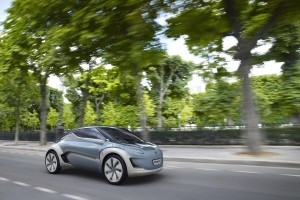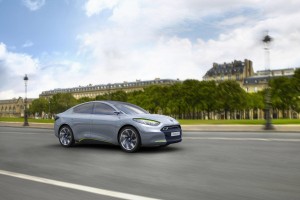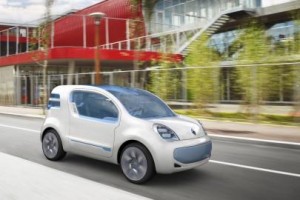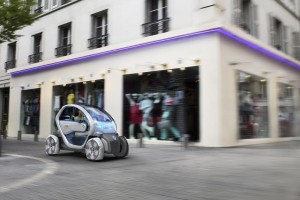While many questions remain about the acceptance of electric vehicles among buyers, there is no doubt that the auto industry is increasingly turning to them as a way of offsetting emissions of traditional internal combustion engines that have dominated vehicle powertrains for more than a century.
The latest evidence of the growing electric vehicle trend comes from Renault, which unveiled four electric concept cars at Frankfurt that clearly are the precursors of an entire range of Renault “Z.E.” electric vehicles. These EVs will start arriving on the market in less than two years’ time. The Z.E. stands for zero emissions, and is a misnomer because it does not take into account how the electricity that powers EVs is generated.
From 2011, Renault will progressively roll out four electric vehicles, including two derivatives of production vehicles now on sale. First will be an electric version of Fluence, which will initially appear in Israel and subsequently Europe. The second will be an electric version of Renault Kangoo Express, which is intended primarily for commercial fleet and business use.
Renault says that the electric vehicle line will then expand to cover other segments, with two vehicles that will be purpose-built as electric vehicles: The Twizy Z.E. Concept, which targets “urban mobility.” While the fourth vehicle will use some of the cues of the Zoe Z.E. Concept, and go on sale at the beginning of 2012. The four-seat, B-car-size Zoe Z.E. is billed as a multi-purpose daily driver for built-up areas.
“This range of electric vehicles will bring environmental soundness at a price everyone can afford,” said Carlos Ghosn, the head of Renault, at the media preview during press days at the Frankfurt Motor Show. “In other words, our cars’ purchase price and utilization costs will be similar or better than comparable diesel vehicles in Europe.”
Competitive Pricing?
It was not immediately clear if the pricing claim of a purchase price of roughly 20% higher than equivalent gasoline models included the massive subsidies of up to $7,500 per vehicle that European makers are quietly lobbying for. Most automakers tell TheDetroitBureau.com that to make EVs viable to more than the fringe audience they now attract such subsidies are needed.
If Ghosn’s pricing claim does not include these large subsidies – or if it only takes into account small tax credits — then electric vehicles might finally become more than the technical curiosities they are now. We shall see.
As always, once you get beyond the question of cost, the next high hurdle a successful EV has to clear is its range. Ghosn claims that the battery technology developed within the Renault-Nissan Alliance, will provide the Twizy, which is essentially a repackaged motorbike, has a 100-kilometer range, and takes four hours to recharge on standard household current. The other three electric vehicles will have 160 kilometers in range and require eight hours of recharging on standard current. Ghosn says that these ranges match most urban and suburban daily use.
“More than 80% of total daily trips in the Frankfurt area, as for most European cities, are below 60 kilometers,” Ghosn said.
Is the Market Really 6,000,000 or More?
Furthermore, Ghosn boldly predicted that the global electric vehicle market should reach 10% of total industry volume by 2020. Even if you used the current depressed global volume of about 60 million units, this means six million or more EVs annually by the end of the decade. This, potentially, is a sweeping change in automobility.

Zoe is a four seat B-car for the suburbs with a range of 100 miles. It takes eight hours to recharge using household current.
“Two years ago, we stated our intention for the Renault-Nissan Alliance to be the global leader in zero emission vehicles,” Ghosn said. “Last month in Japan with the Nissan Leaf and now today in Frankfurt with four new Renault models, that leadership takes a significant concrete step forward,” he claimed.
Renault and Nissan together will be investing more than €4 billion on this EV bet. And governments are bringing far more money to the cause. The Alliance has also been setting up a partnerships with national, state and city governments, as well as with power companies and operators. The partnerships will provide the “financial conditions and infrastructure needed” to EVs affordable and practical. To date, the Alliance has signed more than 30 partnerships.
Ghosn says there will be more to come.
One thing is certain, the Renault EVs will join a crowded marketplace with EVs due from most major makers in the same period. The question remains if there will be sufficient buyers to justify the massive investments now being undertaken?



